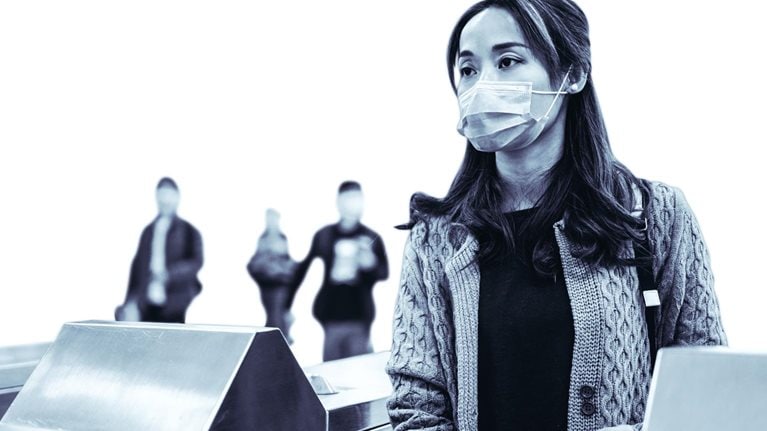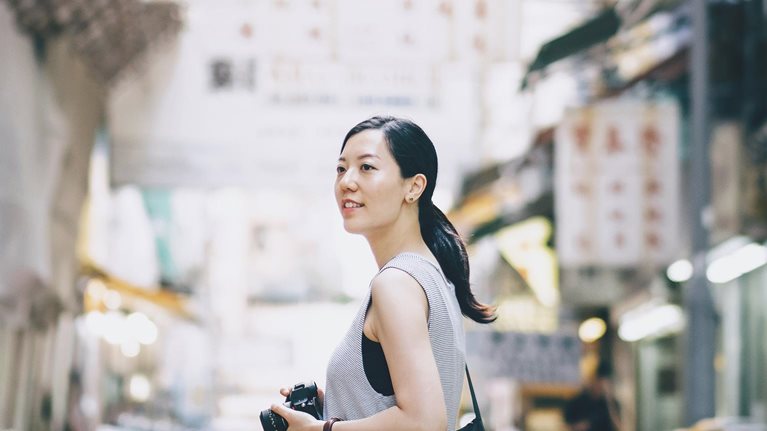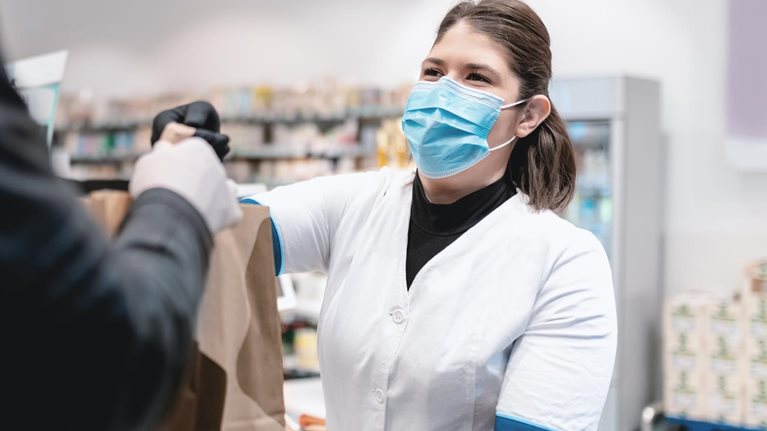COVID-19 has affected every sector across the globe, and the hotel industry is among the hardest hit. Our research suggests that recovery to pre-COVID-19 levels could take until 2023—or later. Investors are providing similar views of hotel companies’ prospects, as seen in the underperformance of US lodging real estate investment trusts (REITs). Like so many industries, hospitality will also see both subtle and substantial shifts in the post-pandemic era. Some are already apparent today.
In this article, we will examine a set of recovery scenarios for US hotels, including differing return and recovery timelines for hotels ranging from luxury to economy segment. On the consumer side, we will look at what guests say will make them feel safe when traveling, including contactless check-ins and check-outs, and an added emphasis on hygiene. And we will review the factors affecting the initial return of travel in the domestic business and leisure segments.
Today: High vacancy
COVID-19 is a challenge to both our lives and livelihoods. The crisis is unprecedented and moving quickly, yet still deeply uncertain.
To put parameters around that uncertainty, our colleagues created nine potential scenarios for recovery of national economies, based on the extent to which the pandemic spread is controlled, as well as the effectiveness of economic policies intended to counter the effects of quarantine (Exhibit 1).

Our recent survey of 2,000 global business executives found that scenarios A3 and A1 are seen as most likely. Each scenario has distinct implications. A3 projects GDP recovery as early as 2021. The more conservative A1 projects a delay in GDP recovery until 2023.
On the hotel front, we analyzed the long-term historical relationship between industry performance and economic data. There is variation across chain scales (from luxury to economy), but we found the strongest relationship between changes in revenue per available room (RevPAR) and the unemployment rate. Based on this relationship, we used the unemployment rate projections from our colleagues to set a baseline for hotel performance. We then adjusted the baseline to account for additional impacts of COVID-19, factoring in the likely length of shelter-in-place restrictions, changes in company travel policies, consumer sentiment and willingness to travel, and structural changes to demand, such as videoconferences instead of in-person events.
In scenario A3, the virus’s spread is contained, and the economy recovers slowly, revenue per available hotel room (RevPAR) falls by 53 percent in 2020, and returns to very near pre-crisis levels in 2022 (Exhibit 2).

In A3, travel restrictions are lifted for most domestic travel in June 2020 and some international travel in July 2020. In this scenario, it will take six months after restrictions are lifted before buying behavior is based on economic, rather than health-related factors driven by effective, at-scale treatment and/or availability of vaccinations. A3 also assumes limited structural, long-term impact on demand from visiting family and relatives (VFR) and leisure travelers, though transient business travel and groups are reduced by 5 to 10 percent.
A1 is more dire: this scenario presents a sustained, systemic shock for hotels. Recovery to something like 2019’s level does not occur until beyond 2023. RevPAR falls by 60 percent in 2020, and only recovers slightly in 2021.
Economy class is faring better than others
Many US hotels are closed, especially luxury hotels. Occupancy rates show what’s happening. In early May, occupancy was less than 15 percent for luxury hotels and around 40 percent for economy.
Looking ahead, we expect economy hotels to have the fastest return to pre-pandemic levels, and luxury and upper upscale hotels to have the slowest (Exhibit 3). That’s in part because economy hotels are better able to tap segments of demand that remain relatively healthy despite travel restrictions, including truck drivers and extended-stay guests.

Operating economics are also significant: economy hotels can stay open at lower occupancy rates than other chain scales. In all hotels, revenue is a function of average daily rate, number of rooms, and occupancy—plus food and beverage where available. Costs are threefold: variable (with revenue); semi-fixed (may be eliminated if hotel suspends operations); and fixed. For owners considering suspending operations, variable and semi-fixed costs are factors, since fixed costs don’t change, no matter what.
Our analysis indicates that to cover variable and semi-fixed costs, luxury hotels conservatively need occupancy rates 1.5 times greater than economy hotels. Many economy hotels can further reduce their variable and semi-fixed costs, especially if they use family labor. Many luxury hotels, on the other hand, require more than 100 employees to operate.
Better demand and lower operating costs suggest that economy hotels will recover faster. That would be consistent with what we’ve seen in past crises. But there will likely be pockets of resilience and recovery across the market. We are already hearing stories about hotels that are sold out for Labor Day weekend. Similarly, there could be air pockets in otherwise solid chain scales. Hotels reliant on meetings, incentives, conferences, and events (MICE) revenue could face deep shortfalls. Owners will need to monitor bookings carefully, to distinguish between one-off blips in growth and a sustained recovery.
Investors are pessimistic
While publicly traded hotel companies have done much worse than the broader market—bottoming out at a 60 percent share price decrease, 25 percentage points below the S&P 500—lodging REITs, which make up a large portion of publicly traded hotel groups, have fared even worse. Mid-cap REIT share prices have fallen as much as 70 percent since January 1, and some small-cap funds have fared even worse. That’s driven by the structure of the REIT, a pass-through vehicle required to pay out 80 to 90 percent of its net income as shareholder dividends. Shareholders’ confidence in REITs has fallen, as many assume that with component properties hit hard, REITS will not be able to pay dividends, their primary value proposition.
Investors are distinguishing among REITs in a few ways, including debt structure and balance-sheet resilience, geography, and the chain scale of the lodging portfolio. Larger REITs are retaining shareholder confidence, for two reasons: most have more liquidity (cash, mainly) with which to cover fixed costs, and larger REITS tend to be less leveraged than smaller REITs.
The road to recovery: Making the hotel experience safe
When asked what it would take to get them to travel again, most US leisure travelers want additional health and safety measures, according to the McKinsey Consumer Leisure Travel Survey, which surveyed 3,498 travelers from five countries in April 2020 (Exhibit 4).

No one measure, however, satisfies those queried. Survey participants were asked to select all the answers that applied, and respondents said, essentially, “yes”—they do not distinguish among the safety measures, and think these all are more or less valuable.
As they ponder those results, many hotels are wondering what steps to take, in what order, to make their properties safe, and demonstrate that to reluctant customers. Some answers may be emerging from China, the first nation affected by the crisis, and the first one to start coming out of it. Leading Chinese hotels are deploying a range of health and hygiene measures that may be helpful as examples.
Would you like to learn more about our Travel, Logistics & Transport Infrastructure Practice?
Some Chinese hotels are fine-tuning their booking tools to remind customers about the restrictions in place, and hotels follow up with guests about those before they arrive. Upon check-in, some hotels require guests to provide proof (via a QR code) that they have not been in contact with infected people. Some also measure guests’ body temperature several times: at check-in, anytime they enter and exit the hotel during their stay, as well as upon their checkout. For Western hotels to adopt the same standards would of course require changes in government policy and public-health approaches.
Chinese hotels have also instituted new cleaning processes. Some leading chains have also added touchless or contactless elements to the customer experience, including contactless checkouts via app or email, and robots to deliver food, beverages, and the like. Some operators are limiting food and beverage options to prepackaged meals, to be consumed inside guests’ rooms versus common restaurant or bar areas. Additional hotel amenities like gyms, spas, and laundry facilities may be closed. At the same time, many Chinese hotels have increasingly targeted their offerings toward the local population and those traveling within short distances—for example, by offering meal plans for locals, or weekend getaways for those who want to spend time outside the city or their apartments.
See “The way back: What the world can learn from China’s travel restart after COVID-19” to read how hotels are testing and learning to see what’s effective all along the customer journey, from prebooking through checkout.
Implications for travel and hospitality
Travel will return. But the recovery will likely take longer than in other industries, and will vary across segments. Business and leisure travel will return at different paces, as will domestic and international travel. What’s certain is that the next normal will be marked by structural shifts, especially around customer expectations for hygiene and flexibility.
For business travelers, demand will likely come back unevenly. Essential travel will differ by industry. According to executives and chief human resources officers in North America, interviewed in April 2020 across an array of industries, every one of their companies is using technology as a substitute for nonessential travel. Most expect that certain types of travel—like internal meetings—will never fully return to pre-COVID-19 levels.
Companies say they plan to turn off their travel restrictions in phases, and are developing decision-making processes and more agile travel policies to account for safety before authorizing travel. Client-facing visits such as site visits and sales calls are likely to return first. Day trips and self-drive travel are likely to return earlier since physical-distancing measures, exposure, and risk will be more manageable. Conferences and industry events will likely be the last to return.
In leisure, we expect that travel to visit friends and relatives will return first, likely by car. Travel restrictions combined with economic uncertainty will likely translate into a higher share of domestic and close-to-home travel. Longer international leisure trips will be slow to return, and travelers will expect greater flexibility in cancelation and change fees. The recovery may include extremely short planning cycles driven by gradual lifts of the travel restrictions and very short booking windows as travelers monitor the situation.
Recent trends in China may offer a glimpse of the weeks ahead for US travelers. As domestic travel in China slowly returns, cautious travelers prefer to stay close to home, either driving or taking trains to regional destinations (Exhibit 5).

Hotels face the prospect of a long recovery. Over the coming months and years, properties’ circumstances will vary based on a number of factors, including chain scale, location, and demand profile. There is no one right response for everyone, but some guidelines apply universally. Hotels must care for their employees, staying engaged with them through the pandemic and keeping them safe when they return. They must manage customer expectations, recognize that these will continue to evolve, and prepare to act agilely to address health and safety concerns. And they must revise their commercial strategy for the restart, with an eye toward the next normal. In the long term, travel will return because of an important shift in consumption—an accelerated pivot from buying things to buying experiences.
We hope the ideas in this article stimulate your thinking and we look forward to hearing your thoughts.


